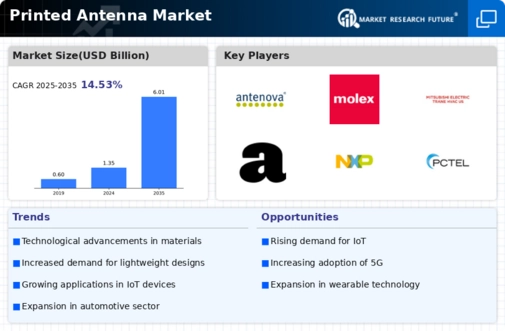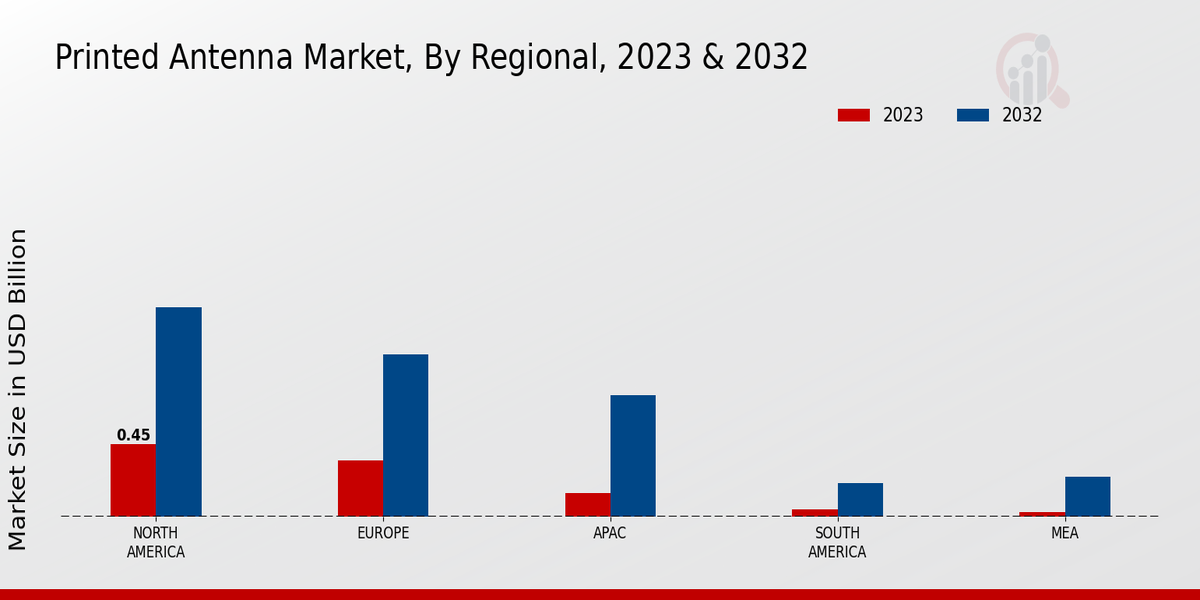Market Growth Projections
The Global Printed Antenna Market Industry is projected to experience substantial growth over the next decade. With a market value of 1.35 USD Billion anticipated in 2024, the industry is expected to expand significantly, reaching 6.01 USD Billion by 2035. This growth trajectory suggests a compound annual growth rate of 14.55% from 2025 to 2035, indicating a robust demand for printed antennas across various sectors. The increasing integration of printed antennas in emerging technologies and applications is likely to contribute to this upward trend, reinforcing the industry's potential for innovation and expansion.
Integration with IoT Applications
The proliferation of Internet of Things (IoT) devices serves as a key driver for the Global Printed Antenna Market Industry. As more devices become interconnected, the demand for compact and efficient antennas rises. Printed antennas, with their ability to be integrated into various form factors, are particularly well-suited for IoT applications. This trend is expected to contribute to a compound annual growth rate of 14.55% from 2025 to 2035, highlighting the role of printed antennas in enabling seamless connectivity across diverse IoT ecosystems.
Cost-Effectiveness and Scalability
Cost considerations play a crucial role in the Global Printed Antenna Market Industry. Printed antennas offer a cost-effective solution compared to traditional antenna manufacturing methods. Their scalability allows for mass production, which is particularly advantageous for industries looking to reduce costs while maintaining quality. This aspect is increasingly appealing to manufacturers in sectors such as automotive and consumer electronics, where budget constraints are prevalent. The anticipated growth in the market reflects this trend, as companies recognize the financial benefits associated with adopting printed antenna technology.
Advancements in Material Technology
Innovations in material science significantly influence the Global Printed Antenna Market Industry. The development of advanced substrates and conductive inks enables the production of antennas that are not only lightweight but also highly efficient. These advancements allow for the creation of antennas that can be seamlessly integrated into various devices, including wearables and IoT applications. As a result, the market is poised for substantial growth, with projections indicating a rise to 6.01 USD Billion by 2035. This growth underscores the potential of new materials to revolutionize antenna design and functionality.
Growing Adoption in Automotive Sector
The automotive industry is witnessing a notable shift towards the adoption of printed antennas, significantly impacting the Global Printed Antenna Market Industry. With the rise of connected vehicles and advanced driver-assistance systems, the demand for reliable and efficient antennas is on the rise. Printed antennas can be easily integrated into vehicle designs, providing seamless connectivity for navigation, entertainment, and safety features. This trend is expected to drive market growth, as automotive manufacturers increasingly prioritize innovative antenna solutions to enhance vehicle performance and user experience.
Rising Demand for Wireless Communication
The Global Printed Antenna Market Industry experiences a surge in demand driven by the increasing reliance on wireless communication technologies. As industries and consumers alike gravitate towards wireless solutions, the need for efficient antennas becomes paramount. This trend is particularly evident in sectors such as telecommunications and consumer electronics, where the integration of printed antennas enhances device performance. The market is projected to reach 1.35 USD Billion in 2024, reflecting a growing recognition of the advantages offered by printed antennas in terms of cost-effectiveness and design flexibility.


















Leave a Comment